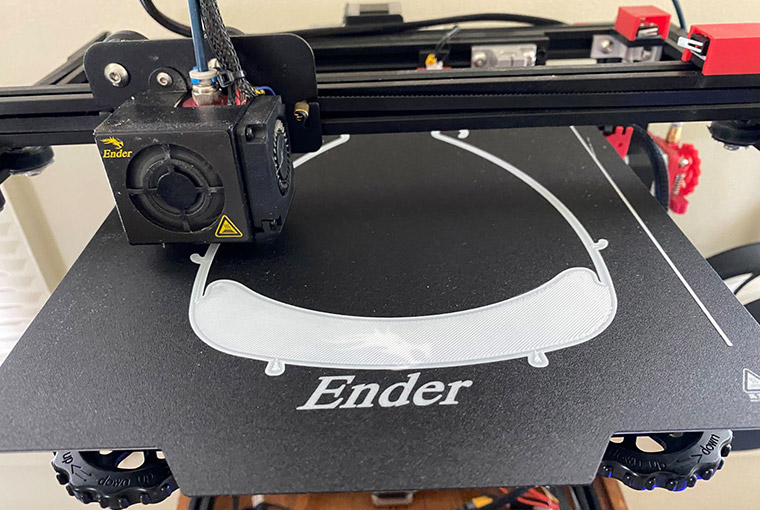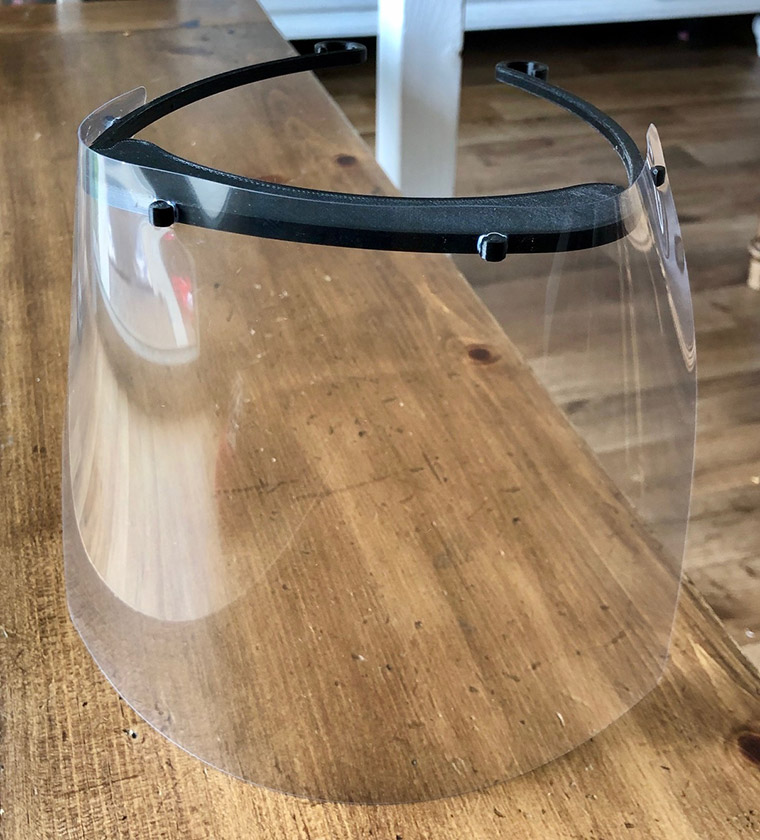Naval War College Student Uses 3D Printing in Fight Against COVID-19

Maj. Nicholas Harwood has been assigned to the U.S. Naval War College this spring as the COVID-19 crisis unfolded. Despite being a full-time graduate student, Harwood wanted to join the fight against the virus.
The Marine Corps logistician and his family decided to use their 3D printer to produce face shields for Rhode Island’s medical workers. After a month’s work, they were able to donate 160 face shields to Kent Hospital in Warwick.
The family started with a design from the 3D printing website www.thingiverse.com. They printed the visor portion and attached it through holes punched in clear plastic shields that they purchased.
Harwood sat down to discuss the project, which was a collaboration with his wife, Meghan, and four children, ages 3 to 11.
Q: How did you get the idea to 3D print medical face shields? A: We got the idea from our friends who are making 3D-printed face shields as part of a community outreach project at our church, North Coast Church, in Fallbrook, California. We heard there is a critical need for protective equipment in the medical community, and 3D printing could help. Since our family is currently stationed at Naval Station Newport, we decided to see how we could contribute and make an impact in the local community here.
Q: What inspired you? A: We wanted to give back to health care workers that are working on the front lines. We thought this would be a great learning experience for our children as well, to see how our 3D printer can be used to impact our community and fulfill a need.
Q: When did you start, and what was the trial and error like? What do you usually use the printer for? A: We originally procured a 3D printer a couple years ago, to use as a learning tool in home-schooling our children. When we realized the need, and the impact the 3D community was having during COVID-19, we started printing face shields in April. It was pretty simple since the design was already available for public use. It took a few days of trial and error to achieve the proper print setting since you can change the speed, temperature, density and thickness of your prints. Once we had the proper settings, we started printing around the clock.

Completed 3D-printed face shield
(Student Maj. Nicholas Harwood/Released)
Q: What was it like to deliver your finished product? A: A professor in my Humanitarian Assistance in Complex Emergencies elective course connected us with a Rhode Island hospital that seemed excited and thankful for the donation. Due to the stay-at-home order and social distancing guidelines, they sent a representative to pick up our donation of 160 face shields.
Q: What's the takeaway for you about the endeavor? A: Giving back to the community is always worth the effort. We never intended to gain publicity with our donation; it’s not about us. It is about finding ways to serve our community when there is a need. So many people have been contributing to the community in many ways, and 3D printing was a way in which we could contribute. Given the situation we are in, and being under stay-at-home orders, we felt it was a small way we can show our health care workers that they are appreciated.
